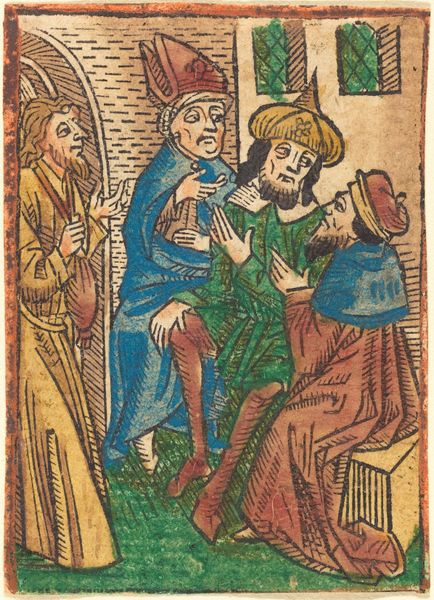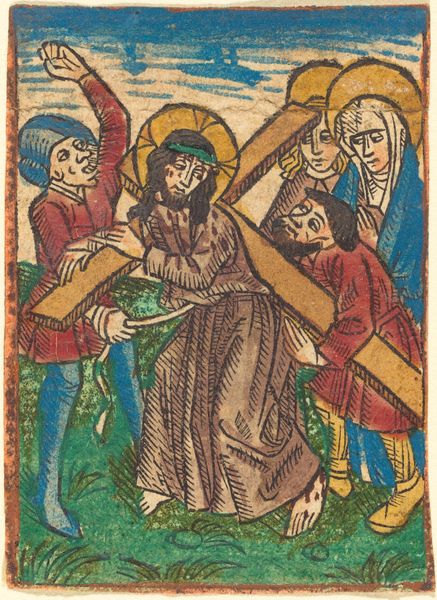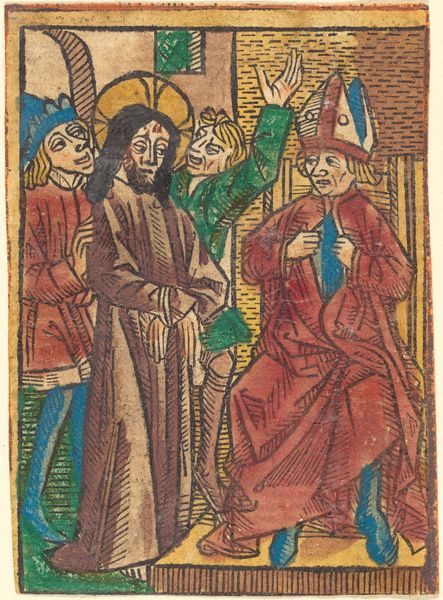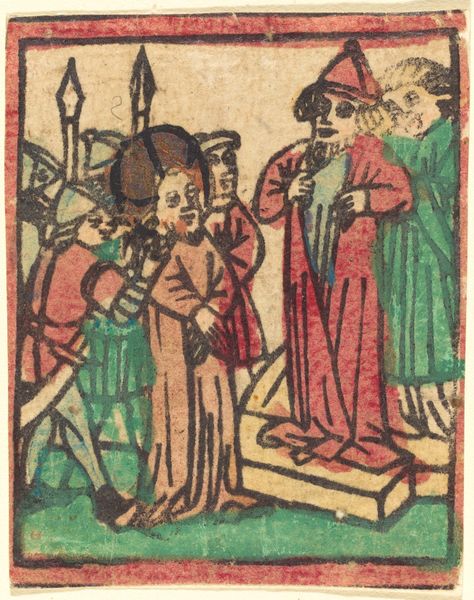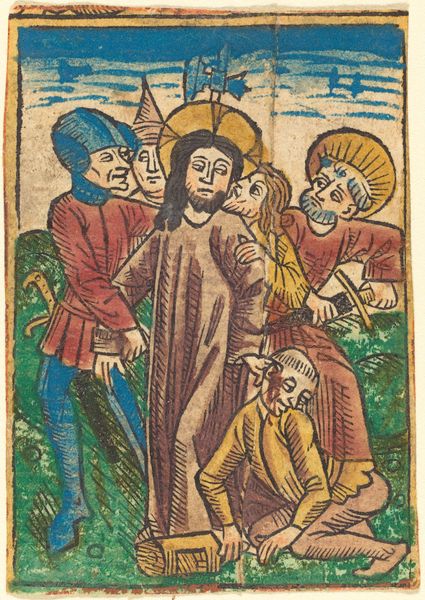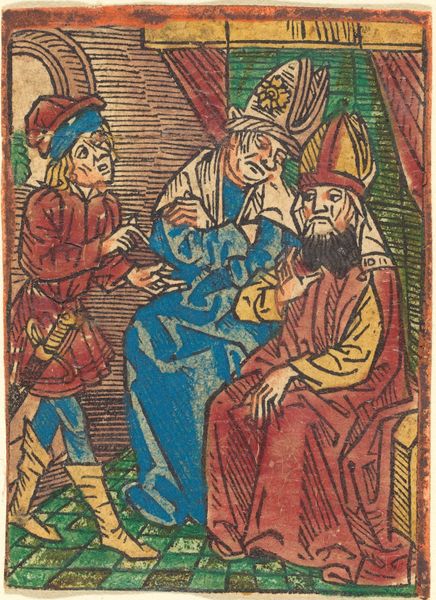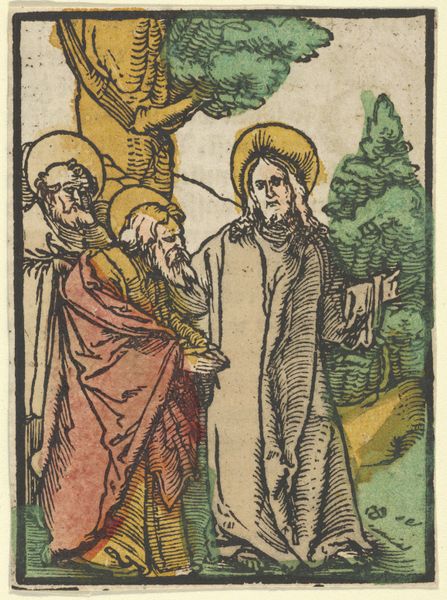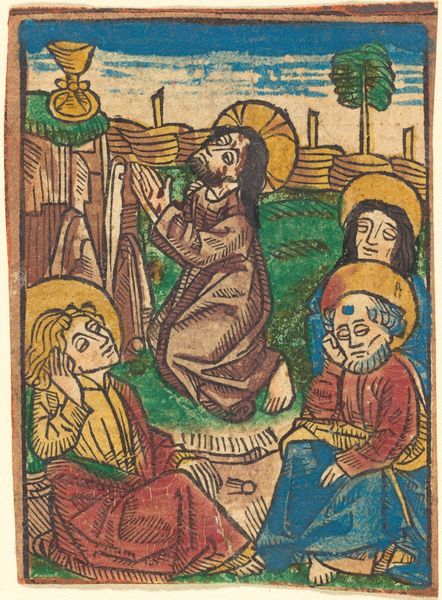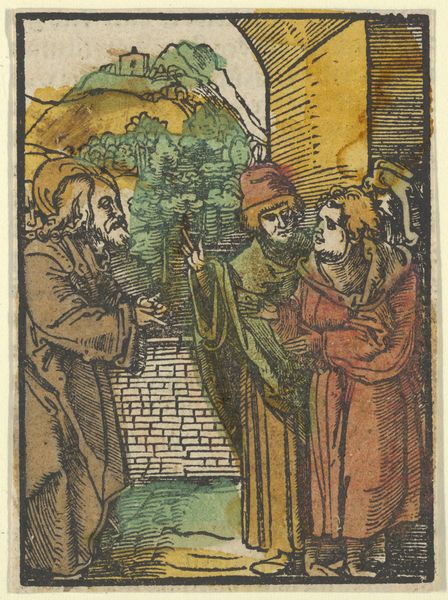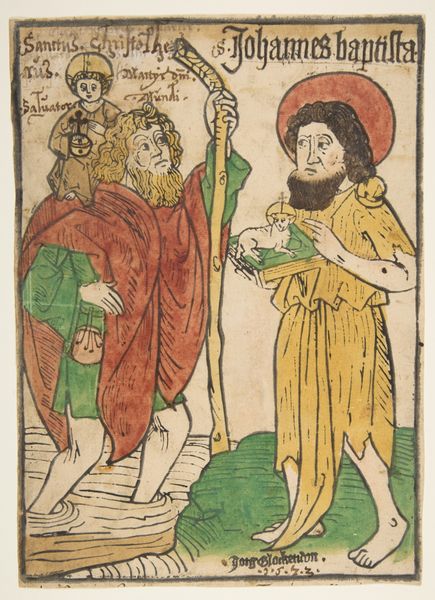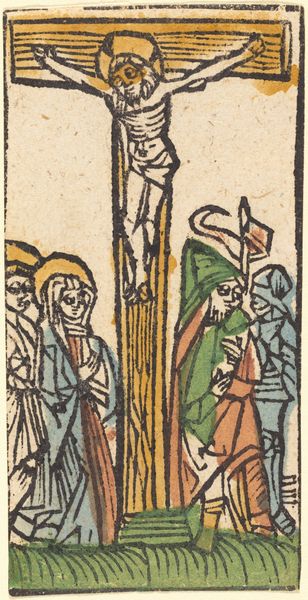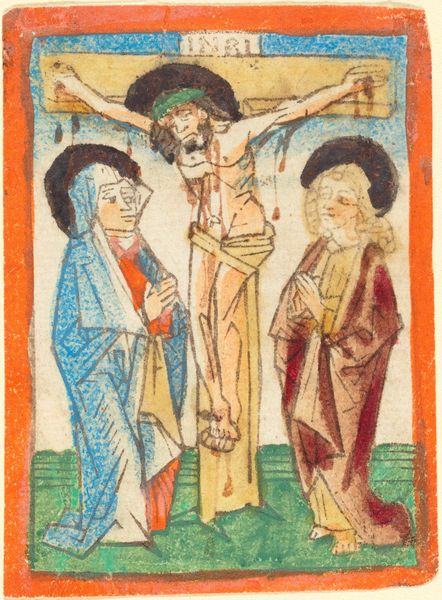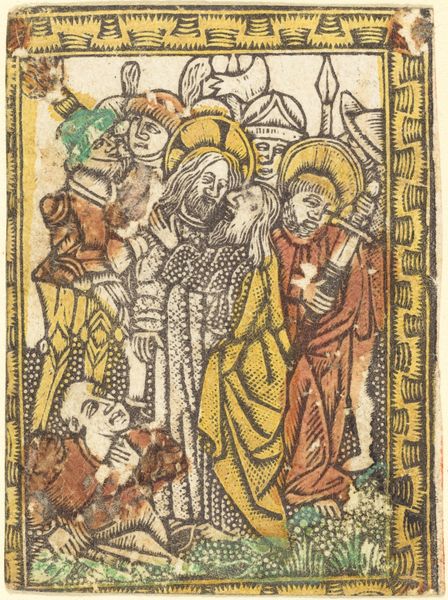
coloured-pencil, print
#
coloured-pencil
#
medieval
#
narrative-art
# print
#
figuration
#
coloured pencil
#
history-painting
Copyright: National Gallery of Art: CC0 1.0
Curator: Let's discuss this captivating print, Ecce Homo, dating back to around 1480-1490, made using colored pencils. Editor: There's an arresting rawness here. It’s not just the subject matter, the presentation of Christ, but something in the application of color feels almost brutal. Curator: Indeed, the chromatic choices, alongside the linear quality, creates a pronounced flatness characteristic of medieval printmaking. Note how the artist uses these simple means to depict emotional intensity, focusing on the suffering of Christ. Editor: It seems incredibly tactile despite its nature as a print. I’m wondering about the workshop that produced this. The rough lines, almost like woodcuts in their simplicity, tell me something about a decentralized, almost cottage-industry, mode of art production. Were these prints mass-produced, catering to popular piety? Curator: That is perceptive, given its relatively modest artistic skill; such images served not merely as decoration but functioned as a narrative and devotional object. The artist uses specific formal strategies to direct our gaze: for example, observe the strategic placement of Christ at the fulcrum point, accentuated by a luminous halo. Editor: You’re spot on. But look at how those figures gesticulating toward Christ frame and dictate this narrative. They're actively creating Christ's condition through labor, physically bringing him into a moment of exhibition that implicates a viewer. Curator: I see your point about the active labor involved, underscoring your earlier comment about the social mode of art production. It invites us to reflect upon its form and production alongside the profound thematic layers present. Editor: Precisely. And I'm left considering this object's place, produced possibly for wider consumption. What labor birthed the narrative of "Ecce Homo", and to whom did this print speak then and now? Curator: It's quite compelling how different lenses highlight fresh interpretations. Editor: Indeed. Examining the labor invested and the visuality that's created transforms our relationship with it.
Comments
No comments
Be the first to comment and join the conversation on the ultimate creative platform.
